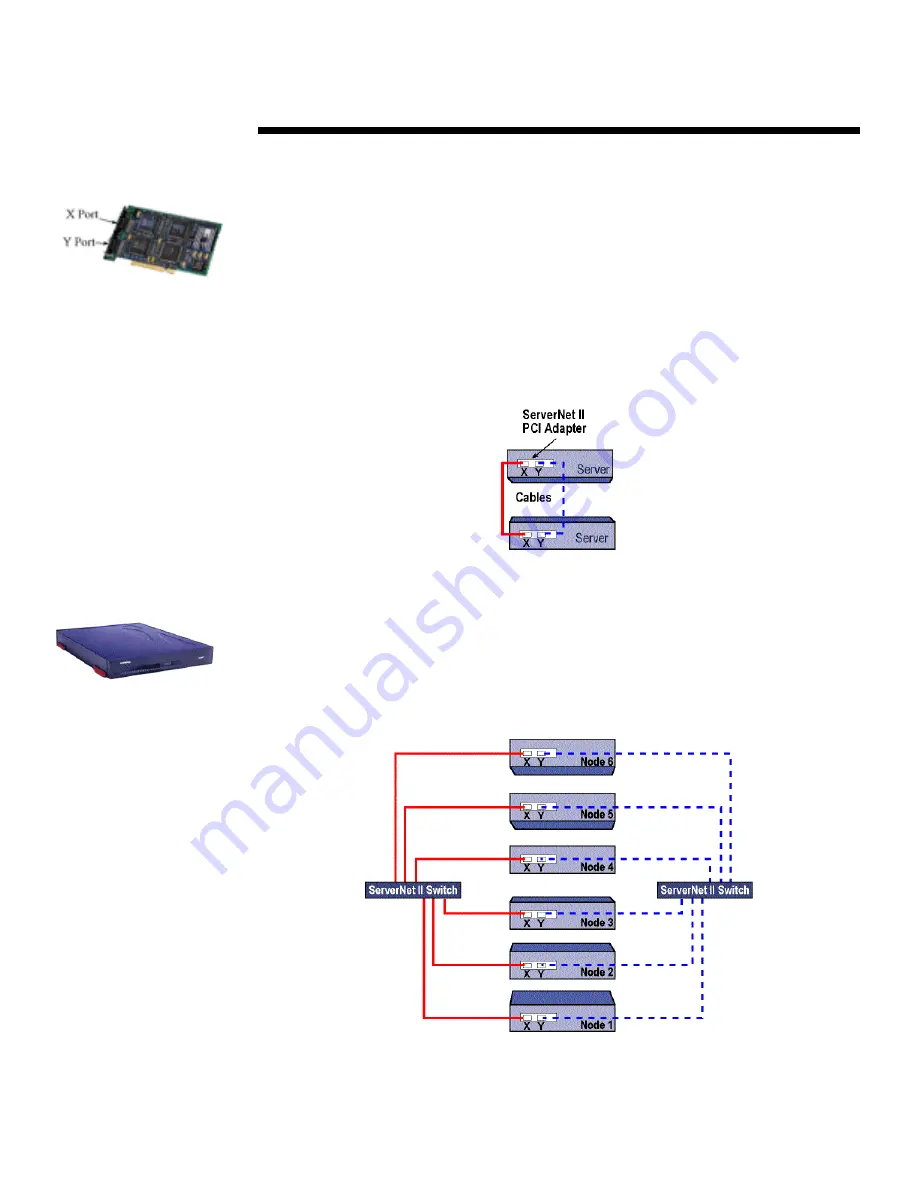
W
HITE
P
APER
(cont.)
6
Doc Number
TC000602WP
..
..
..
..
..
..
..
..
..
..
..
..
..
..
..
..
..
..
..
..
..
..
..
..
..
..
..
..
..
..
..
..
..
..
..
..
..
..
..
..
..
..
..
..
..
..
..
..
..
..
..
..
..
..
..
..
..
..
..
..
..
..
..
..
..
..
..
..
..
..
..
..
..
..
..
..
..
..
..
..
.
ServerNet II Hardware Components
As shown in Figure 2, the basic hardware components for a cluster of two servers include
ServerNet II PCI Adapters and ServerNet cables. Each ServerNet II PCI Adapter has two ports (X
and Y). The respective X and Y ports on the adapters can be linked to create redundant
connections. If either the X or Y connection should fail, data is seamlessly transferred by the other
connection, thus improving reliability. ServerNet II also provides high reliability through self-
checking built into the application-specific integrated circuits (ASICs) and hardware routing
protocol. The hardware routing protocol ensures end-to-end, reliable data transfer.
ServerNet II uses industry-standard 64-bit, 66-MHz PCI components that contain several features
of the VI Architecture to move data efficiently. The link media for ServerNet II is the same
physical media used by gigabit Ethernet and Fibre channel (Serial 1000Base-CX up to 25 meters).
Links are bi-directional with speeds of 1.25 + 1.25 gigabits per second (Gb/s).
Figure 2. Redundant, direct ServerNet II interconnect for a cluster of two servers.
A ServerNet II switch is required for clusters of more than two servers. The ServerNet switch is a
2U (3.5-inch) high, 19 inch-wide, rack-mounted device with connections for twelve ServerNet
cables. Figure 3 shows a SAN consisting of six servers connected to a ServerNet II switch. A
second switch and cables can be added for increased fault tolerance. As more nodes and data paths
are added to the cluster, the aggregate bandwidth of the ServerNet II interconnect increases.
Multiple switches can be cascaded to support as much bandwidth as needed.
Figure 3. Six-node cluster with redundant ServerNet II switches.
ServerNet II PCI Adapter
ServerNet II Switch



























